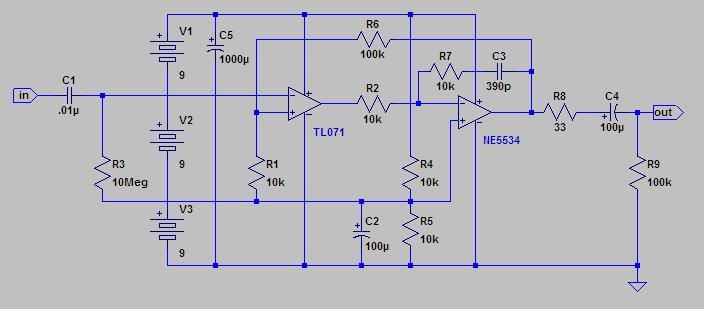lagoausente
Well-known member

[quote author="Samuel Groner"]
Indeed it does, and R2 halfs it to 50k. You could easily replace these resistors with 10M parts to solve that, at least as long as you choose a film part for C1. In addition to this I might use 10k instead of 100k for R4/R5 (somewhat lower noise) and replace the TL072 with OPA2134 for both lower noise and distortion. C2 and C3 might be more comfortable with a value of 100 uF or 220 uF.Does not R1, limit the input Z to only 100k?
Samuel[/quote]
Well, there are also a 22k and one 1k pot in paralell with R1, so I would must remove that to get the high Z at the input, isn´t?
C2 and C3, if want to get over 22uf, have to go to electrolytic type, the higher value I find in metalized poliester is 22uf. What would be better? 220uf electrolytic, or 22uf MKT for C2,C3?
I would like to put a rotary switch to control the gain level. Where I must put it?
What´s the mission of D1 and D2?




